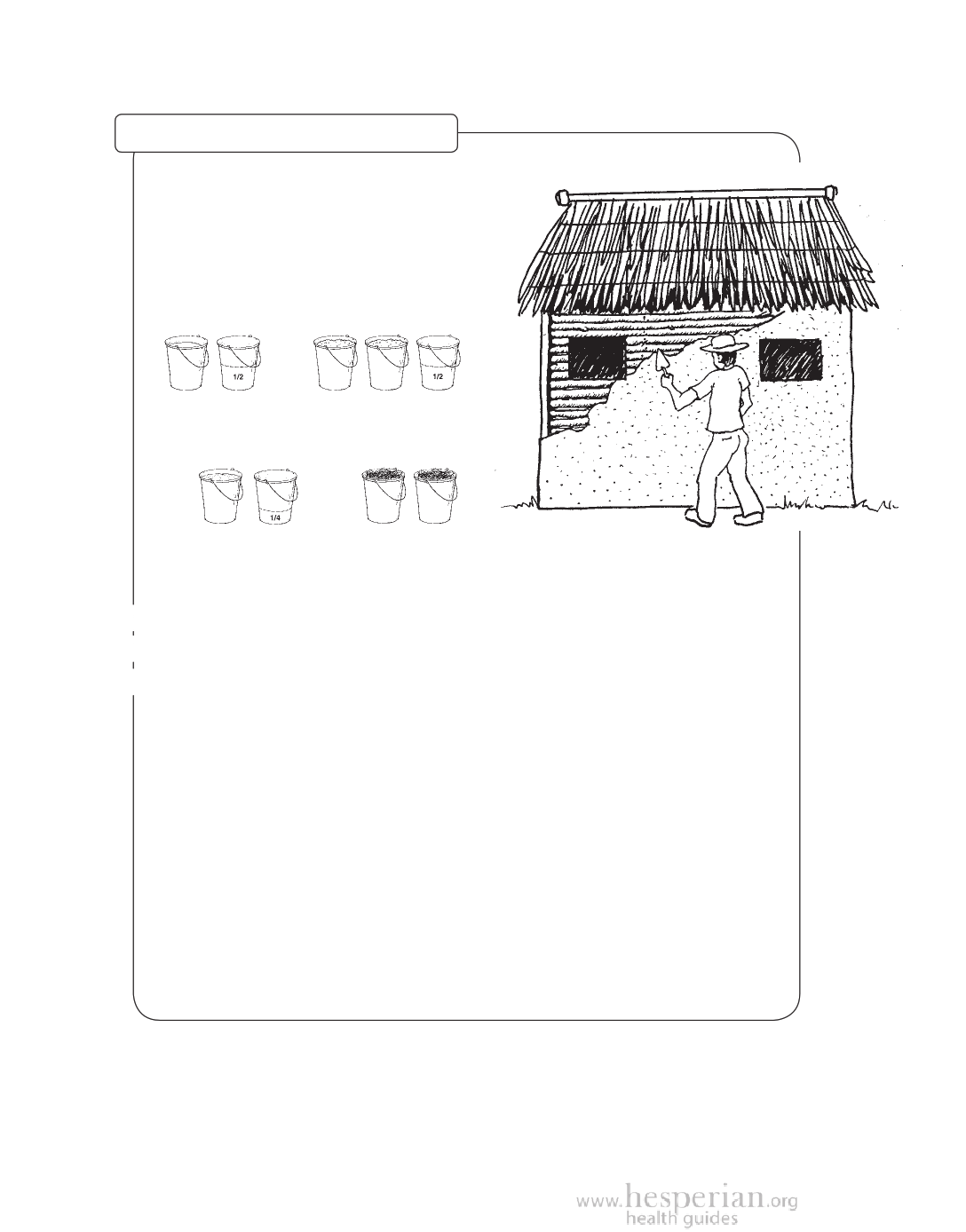
382 A Healthy Home
Howbtconbmxnackbe natural earth plaster
Covering an earth, straw bale, or mud
and stick house with plaster protects
it from rain and prevents insects from
living in the cracks in the walls. Plaster
also makes a house more attractive.
You will need:
+
1½ parts of
water
+
2½ parts of clay soil
(sifted with ¼ inch screen)
=
+
1¼ parts of
sand
2 to 3 parts of
chopped straw
➊ Add sand and clay soil to water. Let it sit until clay and sand absorb the water.
➋ Mix by hand until there are no lumps.
➌ Add chopped straw and mix again until there are no lumps.
If you are plastering a mud wall, wet the wall. For adobe, straw bale, or other
surfaces you may need to apply a layer of clay before applying the plaster. Apply
plaster to a small section of wall with your hands and then smooth it with a trowel.
When it dries, test it. Does it crack easily or crumble when you press it with your
thumb? Does it break away from the wall easily when you pull it, or break down
easily when you sprinkle water on it? If it cracks, add more straw. If it crumbles, try
adding a paste made from wheat flour and water. If it breaks down easily in water,
add longer straw. Once you have plaster that does not crumble, crack, or break
down easily, apply it to your walls.
To plaster a floor, add more sand to this mix. Press down the surface to make it
smooth and level before you start the new floor. Then apply plaster, smooth it, and
let it dry for several weeks to prevent cracking later. If possible, seal the floor with
linseed oil after it dries.
A Community Guide to Environmental Health 2012